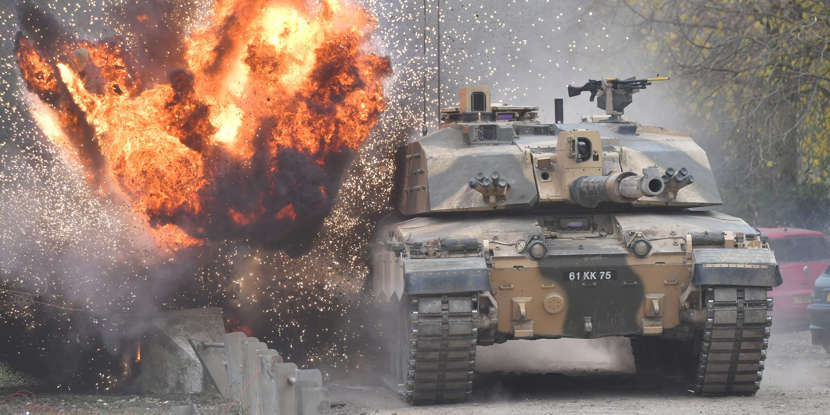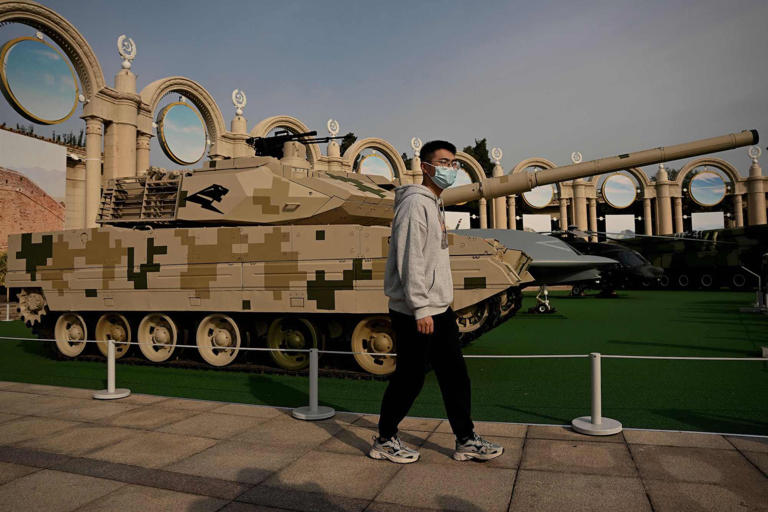
Russia's renewed attack on Ukraine is the first major war between modern militaries in decades, and many countries are analyzing every aspect of the conflict for insights with which to better train and equip their own forces.
One of the biggest lessons has been that despite high losses, tanks remain a vital part of modern warfare, with Russia planning to ramp up its production of them and Ukraine scrambling to secure Western-made tanks for its troops.
Western efforts to get tanks and other armored vehicles to Ukraine have cast new attention to the utility of light tanks, which largely fell out of favor after World War II.
Though not as powerful or as heavily armored as main battle tanks, light tanks are increasingly seen as filling a capability gap between full-fledged tanks and infantry fighting vehicles.
Even before Russian troops crossed into Ukraine last year, several countries were investing in light tanks to bolster their armored forces on future battlefields.
Light tanks
A US Army M24 Chaffee light tank on a street near Bologna, Italy in April 1945. Galerie Bilderwelt/Getty Images© Galerie Bilderwelt/Getty Images
The term "light tank" harkens to when tank doctrine was still being formulated by major military powers in the early 20th century.
At the time, the role of tanks was subject to debate, but their designs were largely based on three factors: mobility, armor, and firepower. Light tanks reflected an emphasis on mobility. They were smaller and had lighter armor and less firepower.
While heavy and medium tanks were mainly for use in direct combat against enemy armor and fortifications, light tanks were meant to take on infantry and other light armor. They were used for scouting for enemy forces, screening for friendly troops, and conducting armored reconnaissance, as well as for skirmishes and fire-support missions.
By the middle of World War II, tanks were mostly classified as heavy, medium, or light. Other specific types, such as tank destroyers and assault guns, were phased out after the war.
US soldiers with a M551 Sheridan tank on a hill near Khe Sanh in South Vietnam in February 1971. Bettmann via Getty Images© Bettmann via Getty Images
Militaries continued developing light tanks during the Cold War — the US and USSR had light tanks that could be air-dropped or deployed amphibiously — but became less common by the end of the 20th century, especially as infantry fighting vehicles proved to be cheaper and about as versatile.
That shift produced a gap between main battle tanks, like the M1 Abrams, and infantry fighting vehicles like the M2 Bradley and wheeled fighting vehicles like the Stryker.
What many see as missing is a weapon that can effectively support infantry in difficult environments such as mountains, woodlands, and islands, while having enough firepower to deal with things like bunkers, machine-gun nests, and lightly armored vehicles.
Main battle tanks are not as reliable in those environments because of their size — a modern Abrams tank weighs 73 tons — and their need to watch for enemy tanks. But infantry fighting vehicles may not be adequately armed or armored, and wheeled vehicles may struggle with rough terrain.
Modern light tanks
A Type 15 tank on display at the Beijing Exhibition Center in October. NOEL CELIS/AFP via Getty Images© NOEL CELIS/AFP via Getty Images
That capability gap stirred interest in light tanks, and over the past decade, three major militaries have adopted new designs.
The most well known and numerous is China's Type-15, also known as the ZTQ-15. It was officially adopted in 2018 and some 500 are believed to be in service. It weighs about 36 tons with its full armor package, has a crew of three, and is armed with a rifled 105 mm gun.
The Type-15 does especially well in high-altitude environments like the Himalayas, where thin air makes it difficult to operate heavier tanks. Many have been deployed there, opposite Indian T-90 and T-72 tanks.
Japan also introduced its Type-16 in 2018. The Type-16 has a tank-like turret but has wheels instead of tracks, reflecting an intention to operate only on Japanese territory, where road networks are generally well developed. It weighs 26 tons, has a crew of four, and is armed with a rifled 105 mm gun.
A Japanese Type 16 during a live-fire exercise in May 2020. CHARLY TRIBALLEAU/POOL/AFP via Getty Images© CHARLY TRIBALLEAU/POOL/AFP via Getty Images
Tokyo classifies the Type-16 as a "maneuver combat vehicle," and it was acquired as part of an effort to trim Japan's tank fleet while still being able counter China.
The Type-16 is meant to respond quickly to attacks and to provide reconnaissance and fire support for infantry. Its weight and size mean it can fit in Japan's Kawasaki C-2 transport planes, and its high mobility allows it to operate anywhere in Japan, including offshore islands.
Some 141 Type-16s are in service with plans to build as many as 230.
In June, the US Army awarded General Dynamics Land Systems a $1.14 billion contract for the Mobile Protected Firepower system, the service's first new vehicle design in over 40 years.
A US Army Mobile Protected Firepower ground-combat vehicle in 2022. US Army© US Army
Part of the Next Generation Combat Vehicle program, the MPF is the US Army's attempt to provide infantry brigade combat teams with an asset that can destroy enemy fortifications and lightly armored vehicles.
Weighing 38 tons, the MPF will have a crew of four and a 105 mm gun. It features an enhanced vision package with cameras on the front, sides, and rear and has an exterior "infantry phone" so troops can talk directly to the crew. Like the Type-15 and Type-16, the MPF can be mounted with additional armor if needed.
GDLS began assembling the first MPFs in December and plans to deliver the first batch later this year. The Army plans to acquire 504 of them and to assign 14 to each IBCT.
Other countries have shown similar interest. Russia hopes to begin mass production of its 2S25M Sprut, which carries the same 125 mm gun as Russia's main battle tanks, while India is pursuing its own light tank to better equip its forces deployed to counter China in the Himalayas.





No comments:
Post a Comment